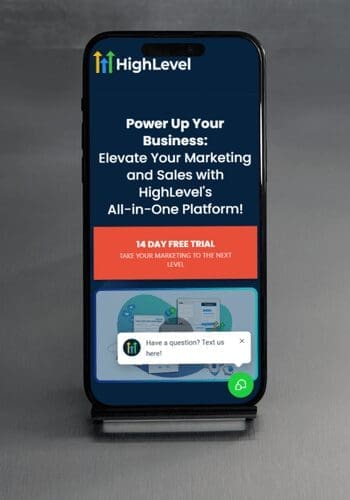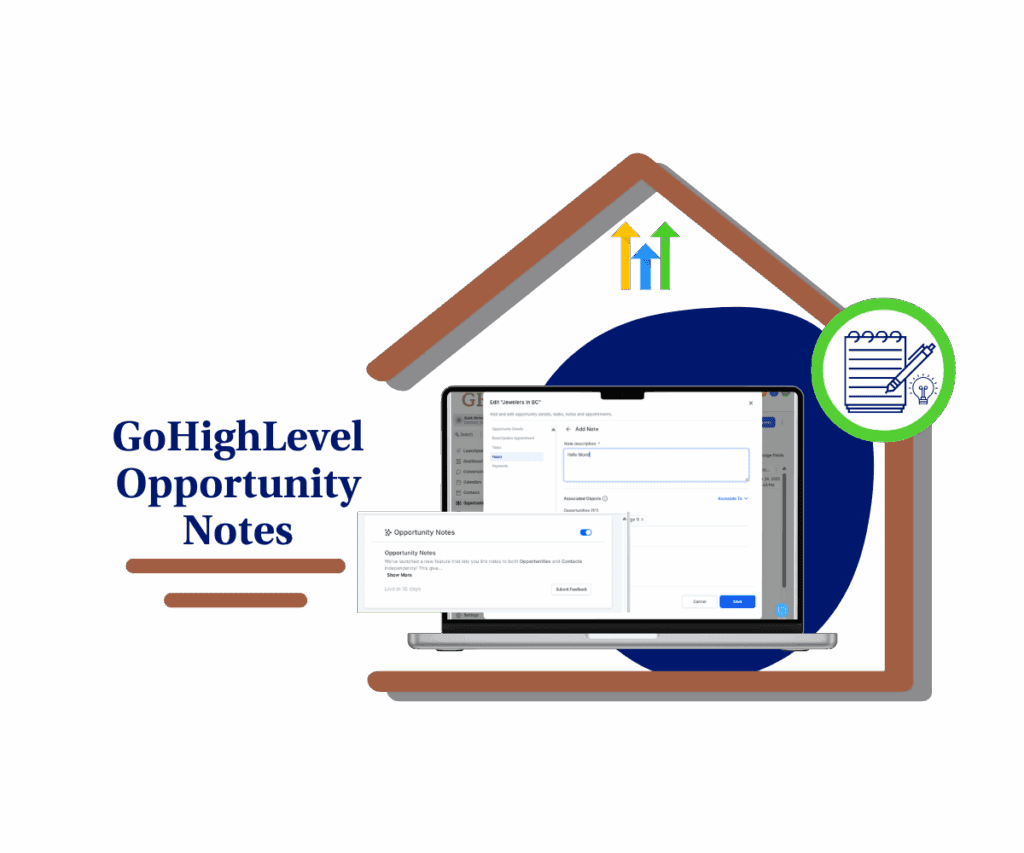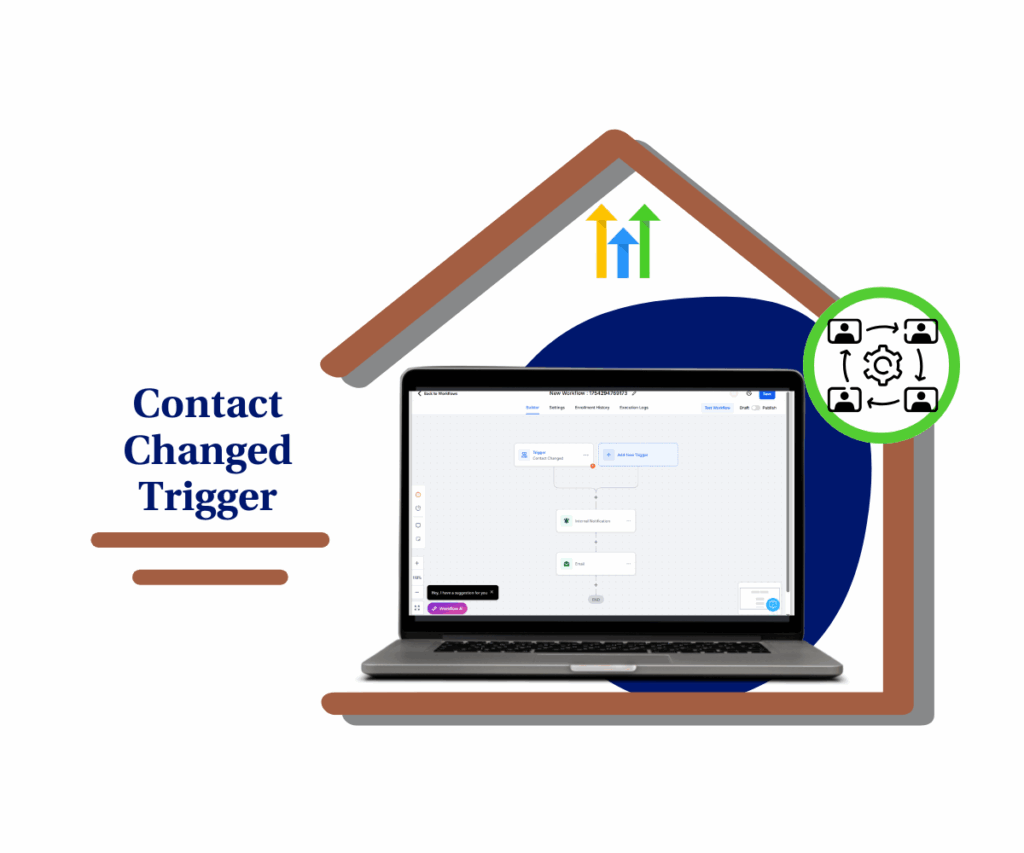How to Create, Customize, and Streamline Pipelines for Better Lead Tracking
Managing leads without a clear process is like running a marathon with your shoelaces tied together. You can move, but you’ll trip more than you’ll win. That’s where sales pipeline management in GoHighLevel comes in. It’s the tool that transforms chaos into clarity, giving agencies, marketers, and sales teams a straight path from prospect to paying client. Pipelines in GoHighLevel aren’t just digital lists. They’re a visual map of yoursales journey, designed to show you exactly where each lead stands and what needs to happen next.
Instead of chasing notes across spreadsheets or wondering who followed up last, you can see every stage of the process at a glance. For anyone serious about growth, sales pipeline management is the backbone of efficiency. With GoHighLevel’s built-in pipeline tools, you don’t just track leads—you nurture them, move them forward, and increase the chances of closing the deal.
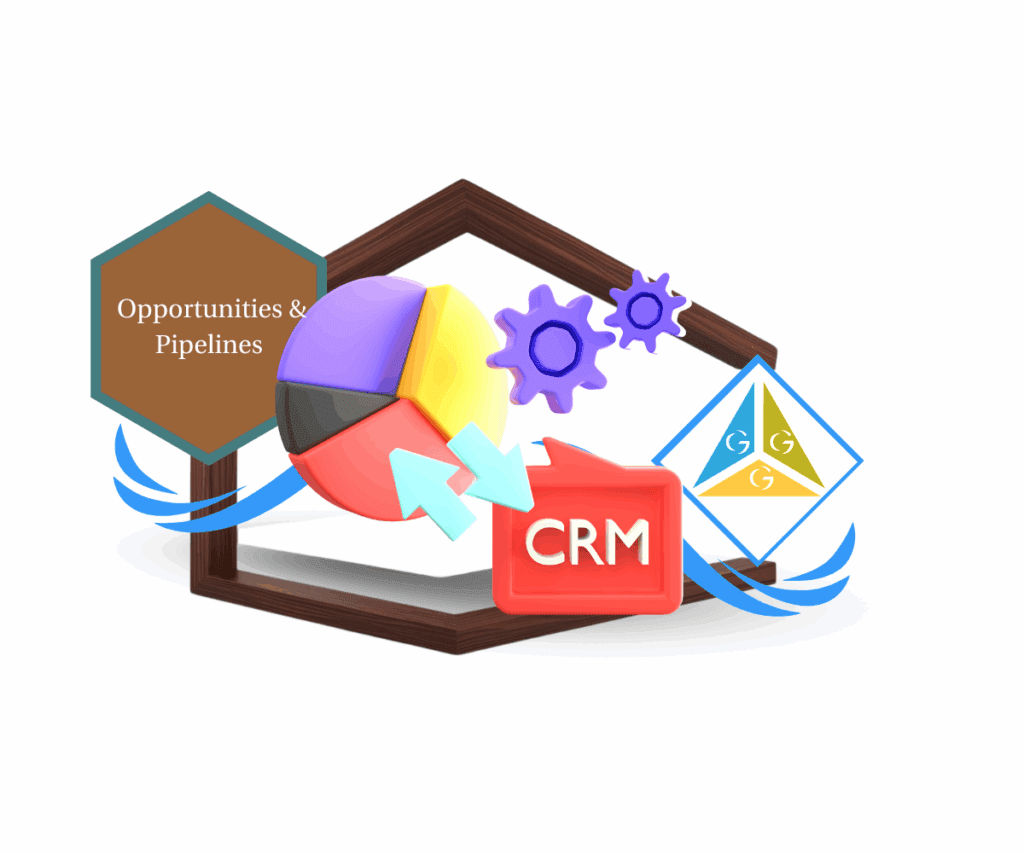
Mastering sales pipeline management in GoHighLevel gives you a clear path from lead to closed deal. With the right setup, you’ll save time, avoid missed opportunities, and create a repeatable system for growth.
Quick Summary – Sales Pipeline Management at a Glance
The purpose of sales pipeline management in GoHighLevel is to organize leads into clear stages so you always know where each opportunity stands. This matters because it eliminates guesswork, improves collaboration, and ensures no deal falls through the cracks.
With GoHighLevel pipelines, you get a structured process for capturing, nurturing, and closing deals. You’ll also benefit from visual dashboard insights that highlight bottlenecks and keep your team focused.
What you get is a repeatable system that tracks every lead, connects to automations, and builds accountability into your sales process.
It only takes a few minutes to create your first pipeline, and the difficulty level is low—even for beginners. Once set up, you can expect faster deal cycles, better forecasting, and more predictable growth.
What’s New – Sales Pipeline Management in GoHighLevel
GoHighLevel’s pipelines are more than a digital checklist. They’re a fully integrated sales tool built right into the CRM. When you create a pipeline, you’re building a step-by-step path for your leads to follow until they become paying customers.
One of the standout features is that every pipeline comes with two default stages: “Won” and “Lost.” These aren’t optional—they’re automatically included so you always have a clear way to mark the end result of any deal. That means less guesswork and more accurate reporting.
Automate marketing, manage leads, and grow faster with GoHighLevel.
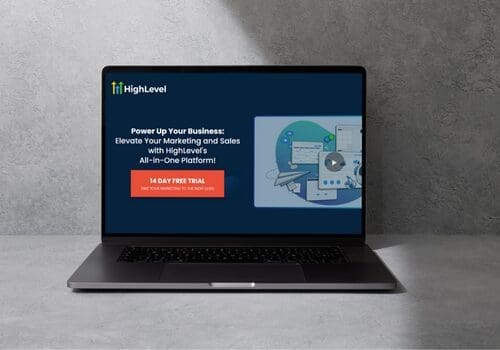
Another powerful feature is how pipelines connect with the dashboard. With funnel and pie chart views, you get instant visual insight into how leads are distributed across your stages. Instead of reading through long reports, you can see which stage is stacked with prospects and which ones need attention.
This makes GoHighLevel pipelines not only a way to organize leads but also a built-in reporting system. The combination of tracking, automation, and visual dashboards is what makes this update so valuable for agencies and businesses that live and breathe conversions.
What’s Changed – Naming and Stage Rules
When it comes to creating pipelines in GoHighLevel, there are a few rules you can’t ignore. First, every pipeline must have a unique name. You can’t copy an existing title or reuse the same name twice. This keeps your CRM clean and avoids confusion when you’re managing multiple services, campaigns, or clients.
The same rule applies to pipeline stages. Each stage needs its own unique label, whether it’s “Discovery Call,” “Proposal Sent,” or “Follow-Up Needed.” Duplicate names aren’t allowed, which means you’ll always know exactly where a lead belongs without second-guessing.
Flexibility is another key improvement. You’re not stuck with a rigid order. Stages can be reordered anytime using the simple up and down arrows, letting you match your pipeline to the way your team actually works. For example, if you find “Demo Booked” works better before “Proposal Sent,” you can swap them in seconds.
This combination of structure and flexibility ensures that your sales pipeline management stays organized while adapting to your business needs. It’s about giving you control without clutter.
Why This Matters – Benefits of Sales Pipeline Management
Sales pipeline management in GoHighLevel isn’t just about organizing leads. It’s about transforming the way you run your business. When your team has a clear path for every prospect, you eliminate the guesswork and replace it with strategy.
One of the biggest benefits is visibility. Instead of asking, “Where’s that lead at?” or “Did someone follow up yet?”, you can open your pipeline and see the answer instantly. This level of clarity reduces miscommunication and ensures no deal slips through the cracks.
Another advantage is identifying bottlenecks. If you notice a pile-up in one stage—say “Proposal Sent”—you know exactly where deals are stalling. That insight lets you adjust your process, improve messaging, or tighten your follow-up game.
Pipelines also make forecasting easier. With GoHighLevel’s dashboard charts, you can quickly spot trends in conversions and predict revenue more accurately. Agencies, in particular, benefit from this because it gives them hard data to show clients where things stand and what’s coming next.
In short, effective sales pipeline management isn’t just organization—it’s growth fuel. It helps your business move faster, make smarter decisions, and close more deals.
How to Use – Step-by-Step Sales Pipeline Management Setup
GoHighLevel makes setting up pipelines straightforward, but having a clear process ensures you get it right from the start. Here’s the exact breakdown: GoHighLevel makes setting up pipelines straightforward, but having a clear process ensures you get it right from the start. Here’s the exact breakdown:
Step 01 – Access the Main Left Hand Menu in GoHighLevel
- The Main Menu on the Left side of your screen has all the main areas that you work in when using GHL
1.1 Click on the Opportunities Menu Item.
- Access the “Opportunities” section of GoHighLevel
- You’ll now be in the ‘Opportunities’ section of GHL, where you can access the Pipelines section from the top menu:
1.2 Click on the ‘Pipeline’ menu link.
1.3 Click Create Pipeline
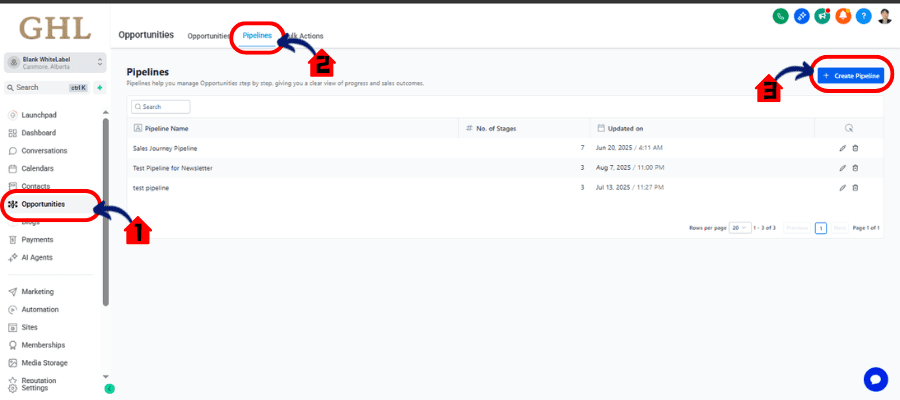
Step 02: Name Your Pipeline
2.1 Add Name to Pipeline
- Enter a descriptive name that reflects its purpose (e.g., “Client Onboarding” or “Sales Outreach”)
- Remember: pipeline names must be unique, so avoid duplicates
2.2 Add Stage
- On the new pipeline screen, click “Add Stage”
- Name your stage clearly, such as “Discovery Call” or “Negotiation”
- Repeat this step for as many stages as you need
- Reorder stages easily using the arrows beside each stage
2.3 Click create
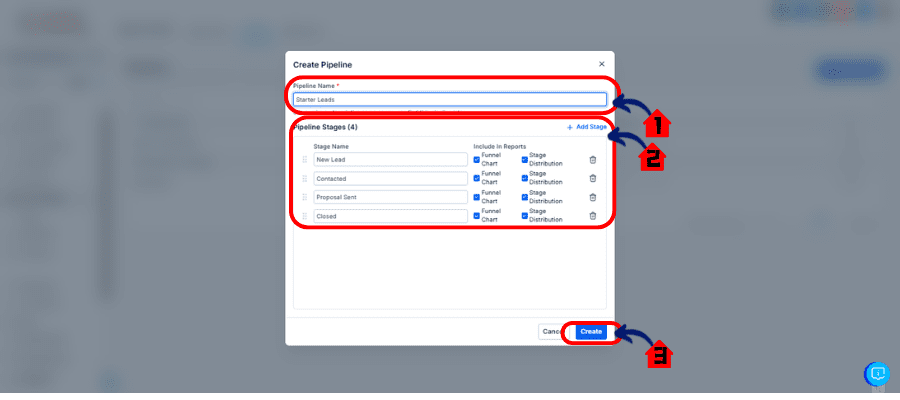
Note: “Won” and “Lost” are automatically included in every pipeline—you don’t need to create them
Following these four steps gives you a complete, functional pipeline that not only organizes your leads but also feeds live data into your dashboard for instant insights.
Pro Tips – Maximizing Sales Pipeline Management in GHL
Creating a pipeline is just the start. The real magic happens when you fine-tune it to match the way your team works. Here are a few pro tips to help you get the most out of sales pipeline management in GoHighLevel:
- Keep stage names action-oriented. Instead of vague terms like “In Progress,” use “Proposal Sent” or “Contract Signed.” This makes it crystal clear what’s happening at each step.
- Don’t overload your pipeline with too many stages. A shorter, tighter pipeline is easier to manage and keeps your team focused on moving leads forward instead of getting lost in details.
- Use the funnel and pie chart visibility settings wisely. Show only the stages that matter most to your dashboard reporting. This prevents clutter and highlights where your deals really stand.
- Audit your pipeline regularly. As your sales process evolves, some stages may become outdated or redundant. Review and update them every quarter to keep your workflow sharp.
- Consider connecting pipeline stages with automations. For example, moving a deal to “Demo Booked” could automatically trigger an email reminder or task assignment.
When used correctly, pipelines don’t just track your deals—they actively push them forward. That’s the difference between a static CRM and a living, breathing sales system.
What This Means for Your Business
Sales pipeline management in GoHighLevel isn’t just about structure—it’s about leverage. By setting up clear stages and rules, you create a system that works even when you’re not watching it.
For agencies, this means smoother client management. You can show clients exactly where their leads are in the sales journey, proving your value with hard numbers instead of vague updates. It’s a powerful way to build trust and demonstrate ROI.
For sales teams, pipelines deliver focus. Instead of scattering efforts across random leads, your reps can prioritize the hottest opportunities and move them through the funnel faster. This clarity reduces wasted time and increases close rates.
For business owners, the benefit is big-picture visibility. Pipelines give you a real-time snapshot of cash flow potential, helping you forecast revenue and make smarter decisions about hiring, scaling, or reinvesting.
Bottom line: pipelines in GoHighLevel turn sales from guesswork into a repeatable process. They make your team more accountable, your forecasts more accurate, and your growth more predictable.
Results You Can Expect using Sales Pipeline Management
Once you’ve set up and started using pipelines in GoHighLevel, the benefits show up quickly. The first thing you’ll notice is clarity. You’ll no longer wonder what happened to a lead or whether a deal fell through the cracks. Every opportunity has a home and a clear status.
Next, expect speed. With well-defined stages, your team can move leads forward faster. No more chasing emails or guessing who’s responsible for the next step. Each stage acts like a signpost, keeping the process moving without stalls.
Accuracy also improves. Because pipelines feed data directly into your dashboard charts, your forecasting becomes sharper. You’ll have a real sense of what revenue is on the table and when it’s likely to close. That kind of insight makes it easier to plan cash flow, manage resources, and set realistic goals.
Finally, expect better results from your team. Sales pipeline management in GoHighLevel gives reps accountability, managers transparency, and business owners confidence. It’s a system that not only tracks performance but actively improves it.
Frequently Asked Questions about Sales Pipeline Management
Conclusion about Sales Pipeline Management
Sales pipeline management in GoHighLevel is more than a tool—it’s a growth strategy. By creating clear stages, enforcing unique naming, and connecting your pipelines to the dashboard, you set up a system that keeps your leads moving and your team accountable.
The payoff is simple: fewer missed opportunities, faster deal cycles, and stronger forecasting. Whether you’re an agency owner tracking multiple clients, a sales team leader managing reps, or a business owner wanting clearer visibility, pipelines give you the structure you need to scale with confidence.
So don’t wait until another lead slips through the cracks. Open GoHighLevel, build your first pipeline, and see how much smoother your sales process runs.
And remember—this is just one of many ways GHL helps agencies and businesses grow smarter. Check back at GHL Growth Garage for more guides that turn features into real-world results.
Scale Your Business Today.
Streamline your workflow with GoHighLevel’s powerful tools.
